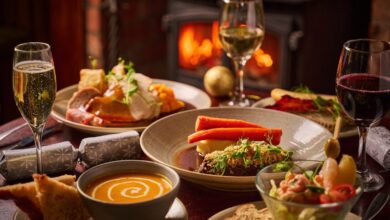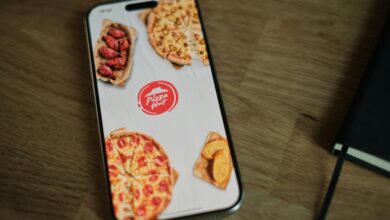How restaurants recouped footfall during an unsteady climate
The Covid-19 pandemic has wiped a staggering £100.2b off hospitality sales in the past 15 months; with restaurants traditionally relying on dine-ins to provide the majority of footfall, it may be that catering businesses start to look elsewhere

Register to get 1 free article
Reveal the article below by registering for our email newsletter.
Want unlimited access? View Plans
Already have an account? Sign in
In the words of trade association UKHospitality, ‘the resilience of pubs and bars will be crucial to the recovery of hospitality.’ However, low footfall still present in the high street is making it difficult for operators to make a comeback. According to a latest report by the CGA, 26% of British customers have not yet returned to ‘on-premise’ sites, resulting in a loss of an average monthly potential spend of £58 per person. It seems there is a generic hesitance among customers to fully re-engage with the hospitality industry.
According to the CGA, between July and September 2021 nearly 1000 sites were forced to close, with independent businesses making the majority of terminations. It can be said that larger chains have been able to absorb the effects of recent troubles, chiefly Brexit and Covid-19, much more comfortably than smaller businesses. As well as having the financial capacity to overcome difficulties induced, larger companies have taken to different locations to recoup lost footfall.
You may be wondering ‘what alternative locations?’ In the case of catering chain Pizza Hut, forecourts.
According to the Association of Convenience Stores (ACS), forecourts contribute a total of £4.7b to the UK economy, with £112m of that total being obtained from ‘convenience’ alone. “One of the biggest reasons forecourts are so profitable is that they’re increasingly being used for non-fuel reasons,” says Chris Noice, communications director at ACS. Yet a 2021 survey from Statista found that ‘food-to-go’ services make up just 14% of forecourts; identifying a potential gap in the market for catering companies. With 44% of forecourts having no neighbouring retailers close by and the greatest percentage (25%) of customers visiting forecourts only twice a week, footfall during the Pandemic grew particularly high in this market due to customers favoring ‘less crowded’ places over typically busy and large stores.
As Noice explains: “54% of people were using local stores, such as forecourts, increasingly because they want to avoid crowded supermarkets or queuing outside supermarkets. Customers were worried about the mass of people in large stores – not knowing where people are coming from and what directions they are going in.” Essentially, forecourts are ‘definitely a potential growth area’ for catering companies, according to ACS.
Pizza Hut has recently partnered with EG Group in order to submerge ‘on-the-go’ takeaway pizza into the forecourt sector, with eight new stores set to open in petrol forecourts by the end of 2021. “Pizza Hut is always looking for new ways to deliver,” says a spokesperson from the catering chain. They add: “Getting in front of more customers and growing overall footfall is one element of our growth strategy in the UK.”
How is the forecourt market beneficial to Pizza Hut? Most crucially, they say it provides “a new customer base”. In addition, its spokesperson adds that by entering this market the chain succeeds in three areas: ‘customer relevance’, ‘ease of access’ and being ‘distinctive in its menu’. The restaurant also emphasised that a number of catering chains have already entered the forecourt market, signifying not only its stability but also its prosperity. “As an experienced food service operator for prominent third-party brands, including brands such as KFC, EG Group is the type of partner we are excited to continue to grow with,” it says.
Noice agrees that forecourts are an “extremely” good place for food service: “We’ve seen brands like Greg’s, Subway and Costa be successful franchises in that space and I think Pizza Hut is a natural fit.” Food and consumer goods insight specialist IGD stresses the stability of the ‘food-to-go’ channel as it predicts the market to be worth £22.7b in 2026 which is a 20.5% increase on its 2019 figures – it may be unsurprising that we see more established catering brands transition into this market in order to access a new customer base.
As well as forecourts posing a solution for lost footfall, restaurants also found other ways to retain customer presence. “Investing in premium technology to make the ordering process as easy as possible for both our team members and our customers is vital,” urges Pizza Hut’s spokesperson, alluding to the need for restaurants to adjust during the Pandemic.
So in what ways did restaurants modify themselves? Well most plainly, deliveries replaced dine-ins to become the restaurant’s primary focus. “We’ve seen a huge increase in home deliveries,” stresses Noice. He adds: “that doesn’t necessarily have to be high tech. It could just be people picking up the phone and saying ‘I love the Samosas that you do on a Friday, can we get some of those delivered?’ and typically that kind of thing happens quite a lot.”
According to a latest report by Technomic, prior to dining room closures, takeaway and delivery comprised 70% of restaurant orders, with dine-in at 30%, yet the Pandemic saw these numbers shift to a full 100% of restaurants solely operating takeaway or delivery orders. In the case of renowned brand Taco Bell, it built on Amazon’s digital offering (AWS) to keep up with the ‘rapidly changing restaurant environment’. By using AWS the brand ‘seamlessly and quickly’ integrated the chains’ mobile and online ordering apps with major third-party delivery providers – in the words of Taco Bell, it now sees a future where ‘50% of orders will be digital’, underpinning the potential of investing in delivery technology.
Delivery investment was not the only way restaurants modified to the new climate. A 2021 study on ‘how the restaurant industry adapted during Covid-19 restrictions’, identifies more feasible ways that catering businesses took to retain footfall. Whilst it can be said that some ‘eventually ended up closing,’ this was largely temporary and the most often cited reason was for the safety of their employees and customers alike, as opposed to customer absence. The study showed that one of the most popular solutions was to open pop-up markets and initiate store partnerships.
The Pandemic led to restrictions on staple items in stores and restaurant suppliers unable to move large amounts of stock due to depleted demand. By turning dining rooms into pop-up markets, restaurants could continue to ‘employ staff’, ‘support suppliers’, ‘create additional revenue’ and provide additional value to their customers by ‘limiting’ the number of trips outside the home.
Many large chain restaurants took to this solution, including renowned sandwich brand Subway. The study also identified that meal kits became a favourable choice for restaurants. Whilst it must be said that a lot of restaurants had to modify their offerings, the study suggests that family meals ‘gained popularity’ as customers lost motivation for cooking. Independent restaurants in the South East of England such as The Eight Bells, Jevington, and Company, a fine-dining restaurant in Eastbourne also constructed meal kits for families, with particular emphasis on annually celebrated events such as Valentines Day, indicating the lengths that smaller and less financially stable restaurants were willing to go to in order to stay afloat.
It is fair to say that restaurants have been one of the most hard-hit sectors from the Pandemic, yet it has also shown to be one of the most persevering. Take Pizza Hut for instance; customer loyalty allowed the brand to see ‘sales continue to grow’ and it prides itself on reassuring customers that it will ‘“always adapt to changing consumer trends.” A considerable portion of the catering chain’s adaptation was to transition into the forecourt market. Not only does this sector offer a large percentage of untouched footfall for the food service sector (86%), it is also one of the fastest growing. The spearheads of this market, such as Costa, Subway and KFC, underpin just how ‘successful’ it can be for particular catering companies, specifically those with greater financial stability.
However, It can not be ignored that a complete market transition is less feasible for smaller restaurants, yet there are alternative ways these businesses were able to retain footfall during the Pandemic: investing heavily in delivery service, securing store partnerships and developing home meal kits. Whilst there were certainly a large percentage of closures, the majority of these were ‘temporary,’ suggesting that restaurants were able to bounce-back after restrictions eased.
In the words of the CGA, “eating and drinking out is the top spending priority for consumers in the coming year”, highlighting the demand for services is there – if they can bring it to their customers.







